Even at its peak in September 2020, new cases of Coronavirus in India had never hit above 100,000. And for the next 6 months, it appeared the country had managed to flatten the curve when new cases were reduced to about 10,000 a day. In comparison, the U.S. new daily cases hit 3 times that of India during its peak, despite having 4 times lower population.
Then it started to climb steadily from March 2021 onwards. On Wednesday (April 21), India reported 2,023 deaths from Covid – the highest single-day tally for the country. On the same day, it also recorded its highest daily increase – a whopping 295,041 new cases. But the 100,000 milestone was already breached more than 2 weeks earlier on April 4, when it hit 103,793 new cases.
From 10,000 new cases a day just last month, the country with 1.3 billion population shot to 100,000 cases on April 4, and skyrocketed to 200,000 infections a day since April 15. It means in just 11 days, the new cases doubled from 100,000 to 200,000. And in less than a week later, the infections jumped to above 300,000, registering 315,802 on April 21.
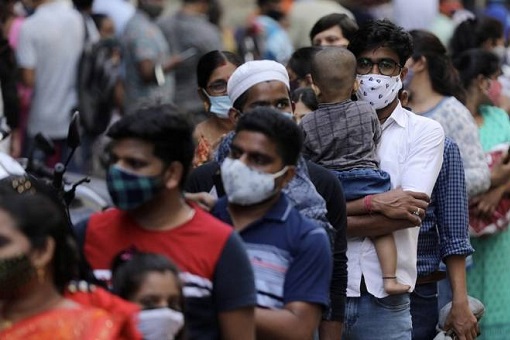
On Sunday (April 25), India’s Coronavirus infections rose by 352,991 overnight – setting a new world record for the fifth consecutive day after it surpassed the U.S. record of 297,430 single-day infections on Wednesday (April 21). Essentially, it is beating its own record every day for the wrong reason. The country has suddenly become the global epicentre of the pandemic.
Latest data show India has now recorded a total 17,313,163 cases and 195,123 deaths, snatching the second spot from Brazil. It is so bad that in capital New Delhi, there’s one death in just under every 4 minutes as the health system breaks down. The second wave, which started in the western states of Maharashtra and Gujarat, has now engulfed almost the entire country.
The sudden rise in infections has brought not only India’s health infrastructure to its knees, but has also overwhelmed its crematoriums, not to mention a severe shortage of oxygen. Even in the country’s capital of Delhi, which has better health infrastructure than most parts of the country, hospitals are struggling for medical oxygen as the commodity was reduced to a few hours.
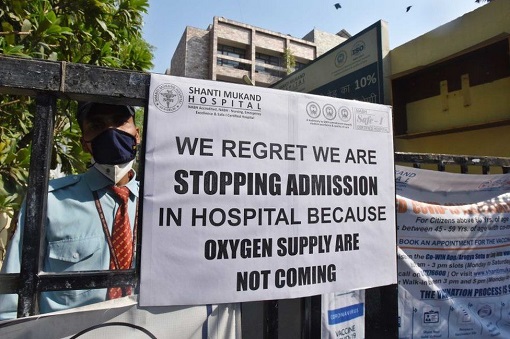
To make matters worse, the government had invited bids for new oxygen plants in district hospitals across the country only in October 2020, more than eight months into the pandemic. Of the 162 that were approved, only 33 have been installed so far, while 59 will be installed by the end of April and another 80 by the end of May. Obviously, there was a lack of emergency plan.
People have died not because of the virus, but because Coronavirus patients could not get enough oxygen, which can help patients who need support with their breathing stay alive. As desperate people queue up outside oxygen refilling centres, hospitals are struggling to accommodate breathless patients as young as 22. They have resorted to social media to beg for oxygen cylinders.
Prices of medical oxygen have gone up nearly by six times, so much so a refillable oxygen cylinder would be snapped up even at a price of 28,000 rupees (US$374; £270; RM1,535). Typically, healthcare facilities consume about 15% of oxygen supply, leaving the rest for industrial use. But thanks to the second wave, nearly 90% of the country’s oxygen supply – 7,500 metric tonnes daily – is being diverted for medical use.
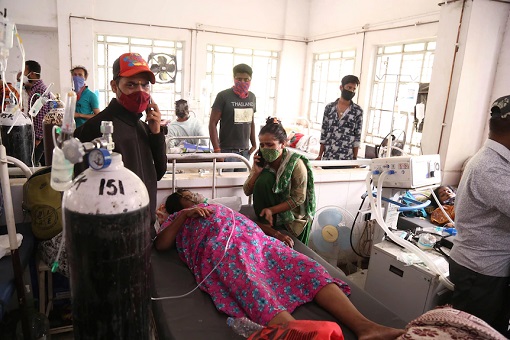
Besides lack of oxygen support, ambulance, ICU beds and ventilators, grieving families are being asked to wait as crematoriums run out of space. With desperate people already dying, sometimes on the roads outside, while waiting to see doctors, crematoriums were forced to skip ceremonies and rituals. Dead bodies are burned as they arrive.
Nitish Kumar, a resident in Delhi, was forced to keep his dead mother’s body at home for nearly two days while he searched for space in the city’s crematoriums. He finally cremated his mother, a government healthcare worker, in a mass cremation facility in a parking lot adjoining a crematorium. Apparently, the authorities could not find a hospital bed for his mother.
Some crematoriums ran out of wood and asked people to bring it themselves. As some crematoriums are working around the clock at 100% capacity, gas and firewood furnaces have been running so long without a break that metal parts have begun to melt. In the southern state of Karnataka, the government has been forced to permit families to cremate or bury their dead loved ones in their own farms, lands or backyards.
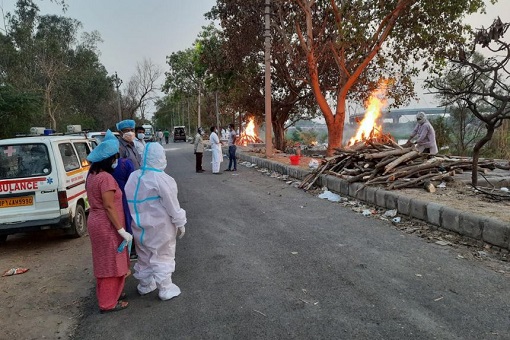
The country is so toxic that foreign countries have started banning flights from India. The UK puts India on its travel red list from Friday. The U.S. CDC (Centers for Disease Control and Prevention) has issued a “Level 4 (Very High)” warning and strongly advised its citizens not to travel to India – even if travellers are fully vaccinated. Canada has banned passenger flights from India and Pakistan for 30 days.
But prior to the bans, India’s super-rich had been fleeing their own country on private jets like crazy. One of the popular destinations is the United Arab Emirates (U.A.E), which is only a short distance away from India. Usually, there are about 300 commercial flights a week operating between the kingdom and India. The U.A.E is home to roughly 3.3 million Indians who make up a third of the population.
Private jet provider, Enthral Aviation, said – “It costs US$38,000 to hire a 13-seater jet from Mumbai to Dubai and US$31,000 to hire a six-seater aircraft”. Dozens of last-minute flights from India to the U.A.E were snapped up despite the price. The Emirate state finally suspended the entry of travelers from India for 10 days effective April 25.
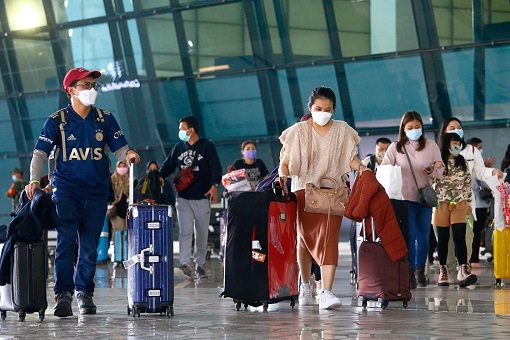
The ultra-rich Indian citizens had also scrambled to land in London ahead of the U.K.’s travel ban. Hong Kong-based APERTUS Aviation said renting an ultra long-range private aircraft from Mumbai to London would range from US$125,800 to US$148,600 for the 9-hour flight. Effective Friday, only British and Irish citizens or third-country nationals with residency rights are allowed to enter Britain.
But how could a country that is home to the Serum Institute of India, which produces 60% of the world’s vaccines each year, is being brought to its knees by Coronavirus? There’s little doubt that complacency has played a vital factor, creating a false impression that it was over before the second wave strikes. The government had declared in February that it had beaten the virus.
Armed with 10,000 news cases a day, the Indian authorities prematurely lifted restrictions, allowing for the resumptions of big religious gatherings, reopening of public places and even crowded election rallies. Even after more than 1,000 people had tested positive for Covid-19 this month, 3-million mostly maskless devotees descend on the Ganges River for a major Hindu festival.

Prime Minister Narendra Modi’s government had refused to call off the month-long Kumbh Mela religious festival due to fear of offending Hindus who are his party BJP’s biggest supporters. Devout Hindus believe bathing in the Ganges absolves people of sins, and it brings salvation from the cycle of life and death. Clearly, the Kumbh Mela only makes Coronavirus spread even faster.
The government also did not improve the healthcare infrastructure when it had the chance, despite knowing the severity of the underfunded and short-staffed system. Like the people who started to think they have escaped the pandemic, the politicians thought there was no need to urgently look into the healthcare system. Authorities across India put public health priorities on the back burner.
But the biggest culprit is the emergence of more infectious variants, which Indian scientists had detected and identified as the B.1.617 – with two mutations (E484Q and L456R). The double mutant strain was first detected in Maharashtra. However, not only the country detected a double mutant, it has also detected a “triple-mutant” variant called the “Bengal strain” – B.1.618.
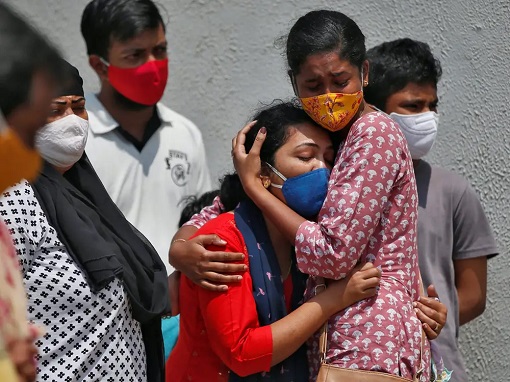
Besides more infective, the Bengal strain may be capable of escaping a person’s immune surveillance, even if that person was earlier exposed to a virus without this mutation, and even if vaccinated. Scientists are worried that the triple-mutated variant carries the E484K mutations, the U.K. or “Kent” version (known as B.1.1.7) that becomes famous after it spread to about 100 countries.
Unlike the U.S., India is facing the challenge to vaccine its massive 1.3 billion people. Even though it is a major vaccine producer, it cannot produce fast enough. It has administered about 140 million shots so far. To complicate matter, drugmaker like Pfizer insisted that India must sign an indemnity bond before allowing its vaccine to enter India. Moderna reportedly not keen to enter the country.
In addition, the crashing healthcare system makes it a new challenge to vaccinate the people. Based on a mathematical model, India will probably hit its peak in mid-May. With 3 more weeks to go, it simply means the worst is yet to come. Of course, the actual number of infected and deaths are under-reported because many have died before they could even reach the hospitals.
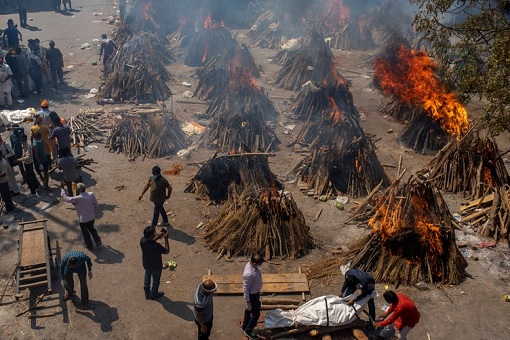
Other Articles That May Interest You …
- Questions Raised Over Pfizer’s Study – South African Covid-19 Variant Can “Break Through” Powerful Pfizer Vaccine
- EU Finally Admits AstraZeneca Covid-19 Vaccine Can Cause Blood Clots – And UK Recommends Get Other Vaccines
- Sinopharm And Sinovac – Should You Trust Any Of These Chinese Covid-19 Vaccines?
- South Africa Suspends “Ineffective” Oxford-AstraZeneca Covid-19 Vaccine – Plans To Sell It And Use J&J Instead
- Before You Rush For Covid-19 Vaccine, Remember This – You Can’t Sue Anyone If Suffer Any Serious Side Effects
- Forget UK’s Covid-19 Variant – This South African Coronavirus Variant Is Deadlier And Can Spread Even Faster
- Mistake Or Cheating? – AstraZeneca-Oxford Admits Manufacturing Error In Its Vaccine Effectiveness Results
- Moderna Reveals Covid Vaccine – Here’s How This 94.5% Effective Vaccine Differs From Pfizer’s Vaccine
- Coronavirus – Here’s How China Is Back To Normal While The U.S. And Europe Are Getting From Bad To Worse
- Russia Reveals “Sputnik V” – But Scientists Condemn The Coronavirus Vaccine As Risky, Dangerous & Could Backfire
- 3 Coronavirus Variants Discovered – Surprisingly, “Type-A” Found In Americans, Wuhan’s Type-B And Type-C In Europe

|
|
April 26th, 2021 by financetwitter
|


|

|

|

|

|

|




























Comments
Add your comment now.
Leave a Reply